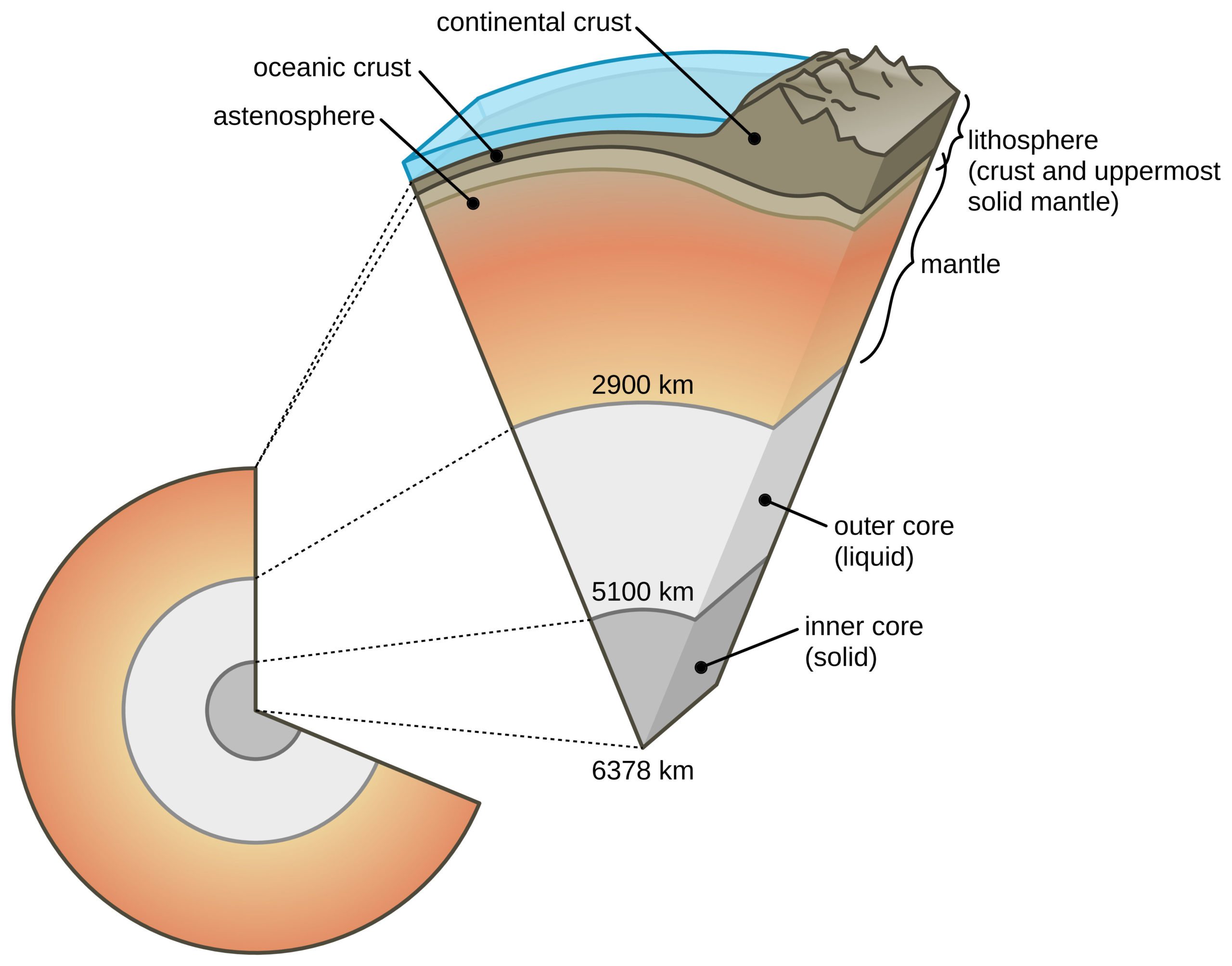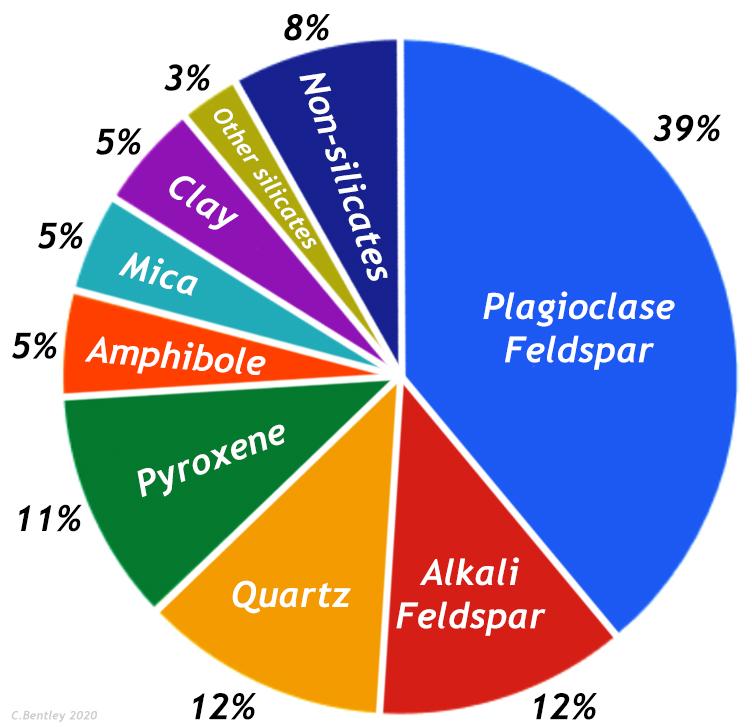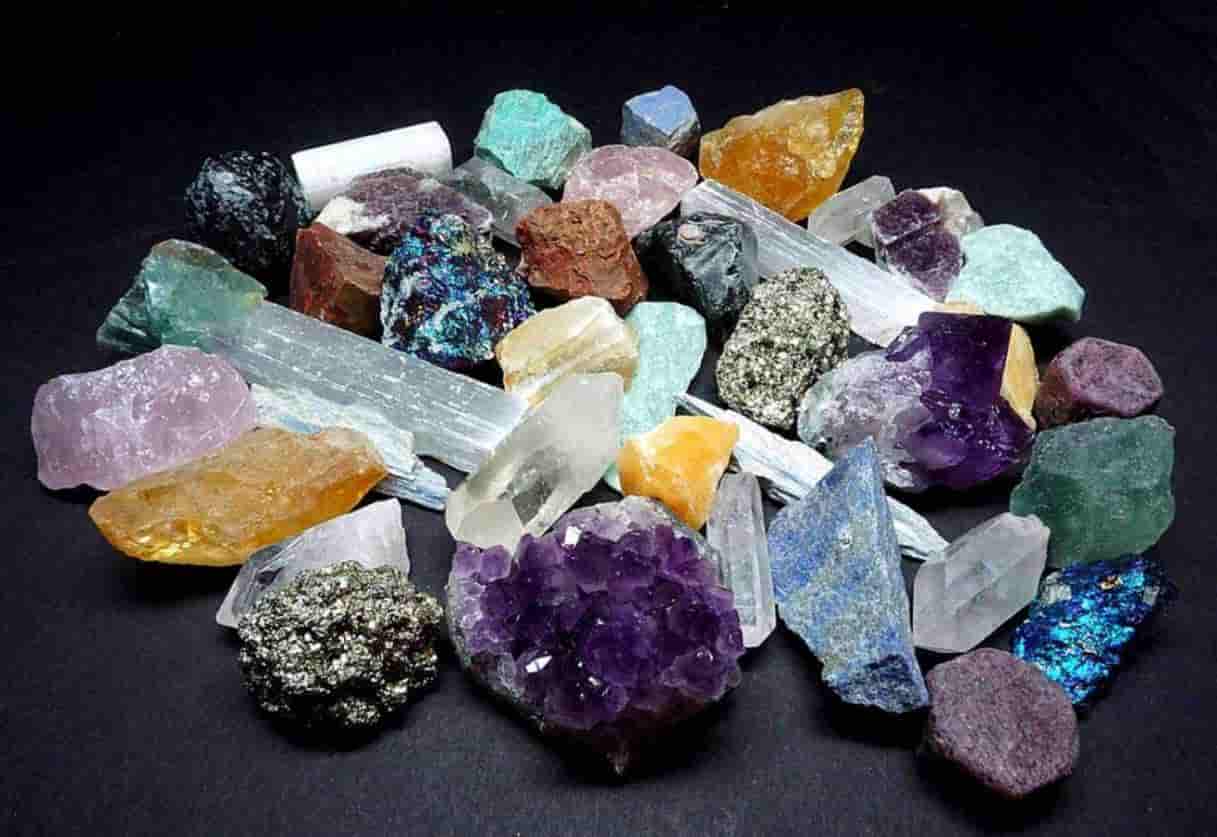The Largest Group of Rock-forming Minerals Consists of
Almost 90 of the. A salt crystal is what shape.

Earth Materials The Rock Forming Minerals Historical Geology
It is the largest group of rock forming minerals and not the smallest that is mainly composed of silicates.

. The compositions of the various feldspars all blend together smoothly. There are more than 3000 known minerals the number is still growing but of these only about 20 are very common and only 9 of these constitute 95 of the crustThese 9 minerals are all silicates and are also called the rock forming mineralsThey can be subdivided into two groups the mafic and felsic minerals according to the principal rocks. What Are Rock-Forming Minerals.
Silicates phosphates oxides sulfates carbonates. Silicates are by far the largest mineral group. Of the nearly four thousand known minerals on Earth most are rare.
By far the largest of the rock forming mineral group are the silicates. The most abundant silicate is called plagioclase. The _____group of rock-forming minerals consists of silicates.
What basin in West Texas has yielded the greatest amount of oil from upper Paleozoic formation in the Western US. The first nine of The Big Ten minerals are indeed from the largest mineral group the silicate minerals. Feldspathoids pyroxenes amphiboles olivines and micas are silicates that are found less frequently.
Amphibole is an. Feldspar and quartz are the two most common silicate minerals. The basic framework of the silicate minerals is the silicon oxygen or silica tetrahedron where four oxygen atoms pack very tightly around one silicon atom.
Silicate minerals are rock-forming minerals made up of silicate groups. This one is known as orthoclase. Question 2 05 05 pts This is the most common of the rock forming mineral groups and consists of a silicon surrounded by four oxygens.
There are only a few that make up most of the rocks likely to be encountered by surface dwelling creatures like us. The smallest group of rock forming minerals consists of silicates. Most of these are composed of only _____elements.
They form pyramid shapes and these minerals make up about 60 of the crust. These occur chiefly in the Igneous Rocks more than 60 percent but also form a good proportion of their metamorphic derivatives. Reflecting the tremendous developments in investigative techniques used in the field since the first edition was published in 1962 this entirely revised edition also contains the new data and applications achieved through the use of X-ray neutron and electron diffraction.
Silicates There are about 4000 known minerals in the Earths crust and about 92 of them are silicates. The basic building block for all silicate minerals is the silica tetrahedron which is illustrated in Figure below. They are the largest and most important class of minerals and make up approximately 90 percent of Earths crust.
These consist mainly of clastic rocks such as sandstone siltstone and shale along with carbonate rocks such as dolostone and limestone. These few elements make up _____of the Earths crust. The bulk of the crust of the Earth is composed of these minerals.
Buildings constructed from it can stand for hundreds or even thousands of years successfully resisting erosion. The largest group of rock-forming minerals consists of the W quartzes. Silicates containing mainly silicon and oxygen along with much smaller portions of various elements.
Y-- SILICATES BONUS 1. The felspars The feldspars in American terminology are the most prominent group of minerals making more than fifty percent by weight crust of the Earth up to a depth of 30km. If the cost of separating a mineral from waste rock becomes too great the mineral may no longer be classified as an ore because.
If the feldspars can be considered a single variable mineral then feldspar is the most common mineral on Earth. Most common rock-forming minerls are. Silica is found in nature as the mineral quartz and its polymorphs.
The silicates are named for the silicon and oxygen foundation in their composition. Jun 1 2015 What are the five most common mineral groups found in rock The five most common mineral groups in rock are the silicates carbonates sulfates halides and oxides. Pure silica or quartz consists of only silicon and oxygen.
The basic building block for all silicate minerals is the silica tetrahedron which is illustrated in Figure below. Feldspars belong specifically to silicates. Minerals in the Earths Crust.
Scientists know of more than _____minerals. Feldspars KAlSi3O8NaAlSi3O8CaAl2Si2O8 are a collection of rock-forming tectosilicate minerals that make. Silicate minerals form the largest group of minerals on Earth comprising the vast majority of the Earths mantle and crust.
Both are extremely common rock-forming minerals. The carbonate rocks consist primarily of calcite and dolomite. Feldspars are a group of closely related silicate minerals that together make up the majority of the Earths crust.
Almost 85 of the atoms in the crust are oxygen or silicon atoms and as a result the vast majority of common rock-forming minerals are silicates -- combinations of oxygen and silicon primarily with the other six most common metals listed above. The largest group of rock-forming minerals are silicates they account for about 75 of the mass of the Earths crust. Feldspar and quartz are the two most common silicate minerals.
Quartz is a mineral consisting of carbon and water particles in a constant frame of SiO4 silicon-oxygen. Both are extremely common rock-forming minerals. Silicates are by far the largest mineral group.
These clastic rocks are composed of mainly quartz clay minerals and a small amount of micas and feldspar minerals. The largest group of silicates are feldspars. One of the softest minerals is.
Silicates are the most important rock-forming minerals and constitute at least 75 percent of the earths crust. The most resistant of the minerals widely used in construction is granite. Asulfates bcarbonates coxides dsilicates Earth Science Science Geography Comments 1 Answer.
Which of the following represents the largest and most important group of rock-forming minerals. In mineralogy silica silicon dioxide SiO2 is usually considered a silicate mineral. The largest group of rock-forming minerals consists of the.

What Are Rock Forming Minerals

Earth Materials The Rock Forming Minerals Historical Geology

Rock Forming Minerals 10 Most Common Rock Forming Minerals Geology Page
Comments
Post a Comment